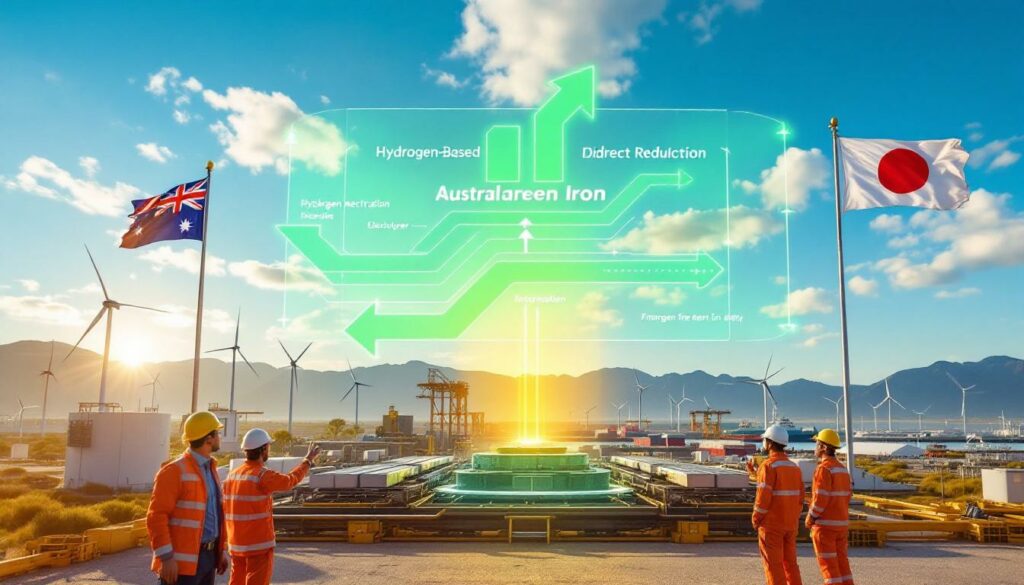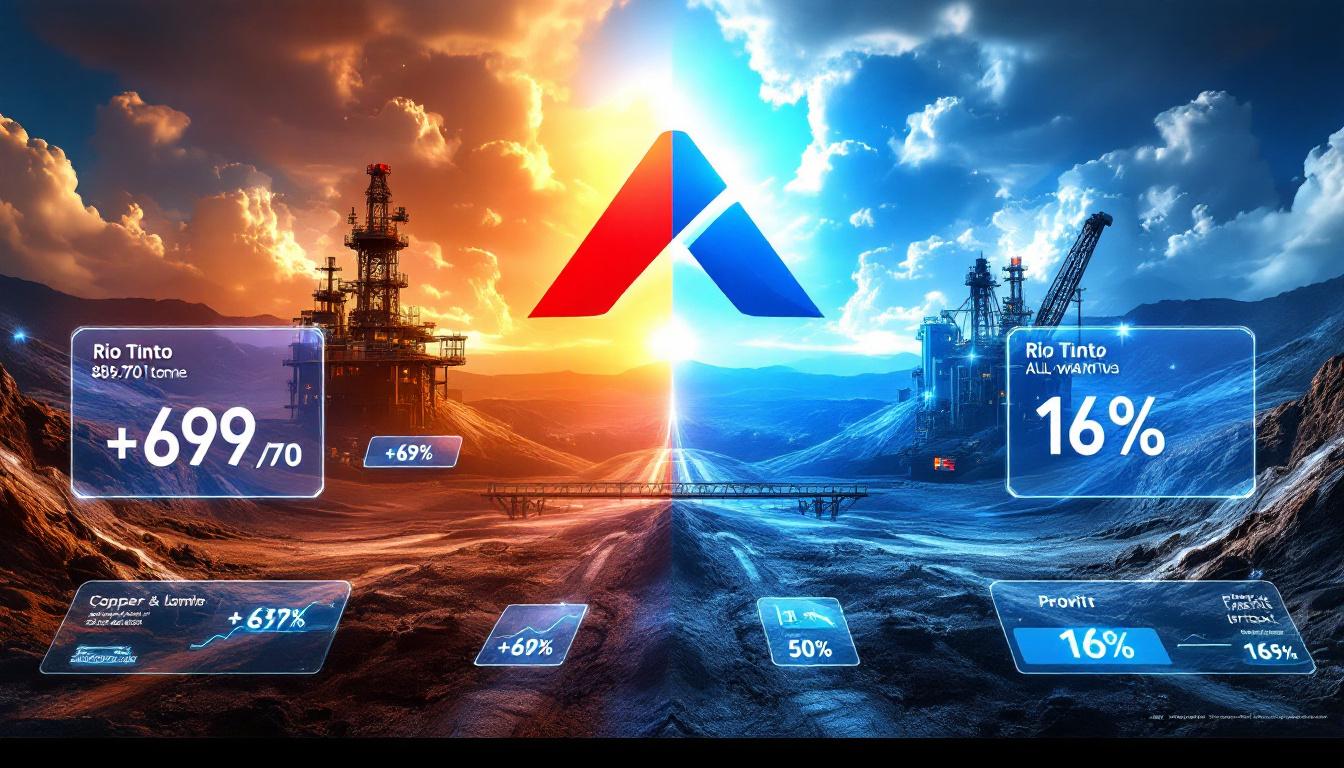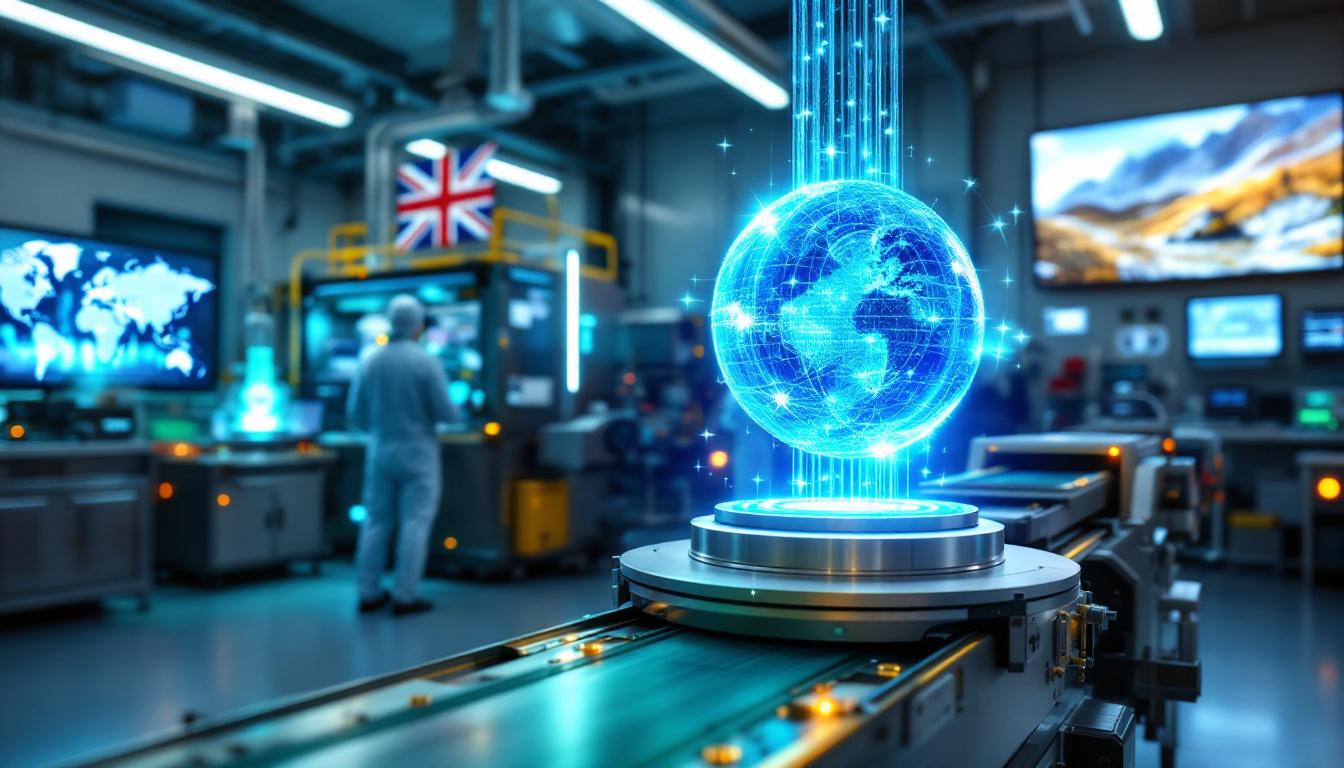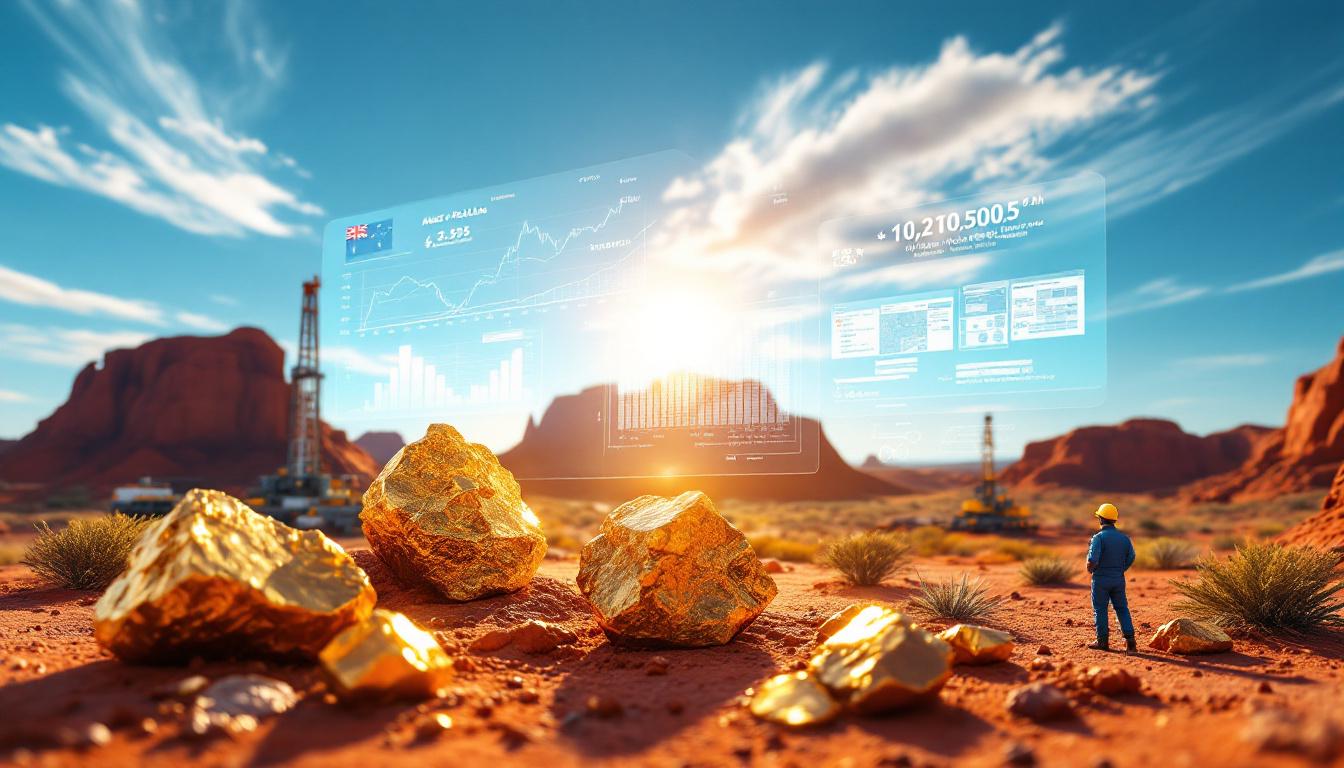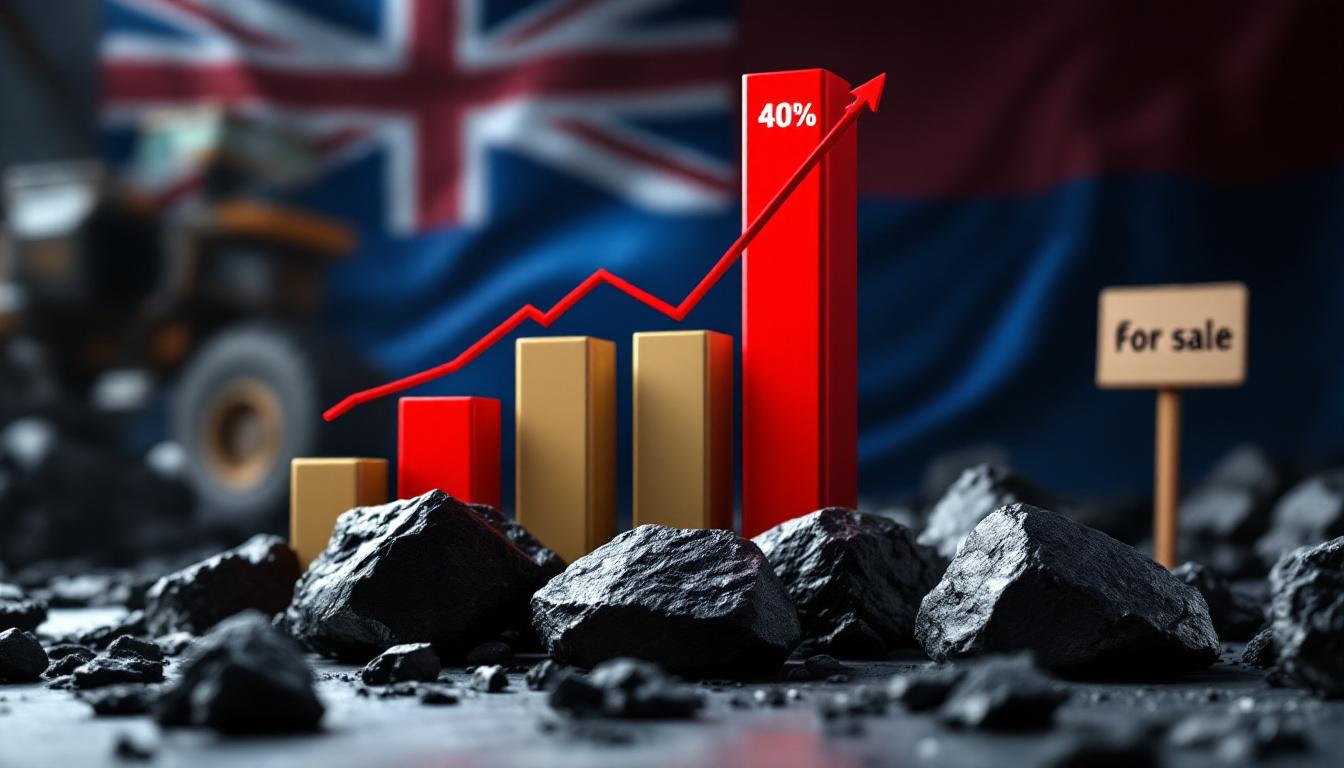What is Green Iron and Why is it Important for WA-Japan Relations?
Green iron represents a revolutionary approach to steelmaking that eliminates traditional carbon-intensive processes. Unlike conventional methods, green iron production utilizes renewable hydrogen as a reducing agent instead of coking coal, significantly lowering the carbon footprint of one of the world's most emissions-intensive industries.
The steel industry currently accounts for approximately 7-9% of global carbon emissions, making it a critical sector for decarbonization efforts. By transitioning to green iron production, manufacturers can potentially reduce their carbon emissions by 80-90%, creating a pathway toward genuinely sustainable steel.
"Green iron is a low-carbon steelmaking feedstock produced using renewable hydrogen instead of coking coal, positioning Western Australia as a key supplier of low-emissions materials for the global energy transition."
— Australian Mining (July 7, 2025)
The Strategic Importance of Green Iron Development
The development of green iron production capabilities serves multiple strategic objectives beyond emissions reduction:
- Climate impact reduction: Addressing one of the hardest-to-abate industrial sectors through technological innovation
- Economic transformation: Creating new value chains that leverage existing resources while developing advanced manufacturing capabilities
- Energy transition enabler: Supporting industrial decarbonization without sacrificing productivity or economic growth
- Supply chain resilience: Developing alternative production methods that reduce vulnerability to coal market volatility
For Western Australia and Japan, green iron represents a natural evolution of their long-standing resources partnership, transitioning from traditional commodities toward climate-compatible materials essential for industrial decarbonisation benefits.
How Will Premier Cook's Japan Visit Strengthen Decarbonization Partnerships?
Western Australia Premier Roger Cook's first official visit to Japan since his re-election in July 2025 marks a significant diplomatic milestone in the WA-Japan relationship. The visit emphasizes both the historical importance of this economic partnership and its evolving focus toward green technology collaboration.
"Being the first official visit to Japan since the election, this is a chance to reinforce how much we value our longstanding relationship and recommit to our joint priorities."
— Premier Roger Cook, WA Government Media Statement (July 2025)
The diplomatic mission represents a strategic pivot toward future-focused industrial partnerships, particularly in green iron and related decarbonization technologies. By engaging directly with Japanese government officials and industry leaders, Premier Cook aims to position Western Australia as Japan's preferred partner for low-carbon resources and energy.
Key Objectives of the Japan Visit
Premier Cook's agenda focuses on several interconnected priorities:
- Strengthening bilateral cooperation in green iron production through technical knowledge sharing and joint demonstration projects
- Advancing joint initiatives in decarbonization technologies including hydrogen, ammonia, and carbon capture utilization and storage (CCUS)
- Reinforcing WA's position as a reliable supplier of both traditional and next-generation energy resources
- Establishing frameworks for technology transfer and investment to accelerate commercial deployment
"Having face to face meetings with key Japanese Government and industry stakeholders affords us the opportunity to further strengthen the fantastic relationship WA and Japan have shared for so many years."
— Premier Roger Cook, Australian Mining (July 7, 2025)
The visit builds upon decades of economic cooperation, with particular emphasis on how Western Australia can support Japan's ambitious 2050 net-zero commitment through both immediate and long-term energy transition strategy.
What Makes Western Australia Ideal for Green Iron Production?
Western Australia possesses a unique combination of natural resources and infrastructural advantages that position it as an ideal partner for Japan's industrial decarbonization efforts. This strategic alignment creates natural synergies for green iron development and production.
WA's Competitive Advantages
- Abundant iron ore reserves: Home to some of the world's largest and highest-quality iron ore deposits in the Pilbara region, with ore grades typically exceeding 60% Fe content
- Renewable energy potential: Extensive solar resources in the inland regions and world-class wind resources along the coastline, providing capacity factors exceeding 30% for solar and 40% for wind in optimal locations
- Established export infrastructure: Decades of investment in port facilities at Port Hedland, Dampier, and other locations specifically designed for bulk materials handling
- Technical expertise: Deep experience in resource extraction, processing, and transportation logistics built over generations
- Stable investment environment: Strong regulatory frameworks, political stability, and transparent approval processes
"Combining WA's rich iron ore deposits with renewable energy potential and export infrastructure makes the state a natural partner for Japan's steelmakers."
— Australian Mining (July 7, 2025)
These advantages create a robust foundation for developing green iron production at scale. Western Australia's existing trading relationship with Japan—valued at $29.8 billion in 2024—provides an established commercial framework that can be expanded to include next-generation materials like green iron.
The state's vast land availability also provides space for large-scale renewable energy installations required for hydrogen production, without the land constraints that limit similar developments in Japan and other densely populated nations.
What Decarbonization Technologies Will Be Discussed?
The bilateral discussions between Western Australia and Japan encompass multiple pathways to industrial decarbonization beyond green iron. This comprehensive approach reflects both regions' commitment to emissions reduction while maintaining economic growth.
Key Technology Focus Areas
-
Green hydrogen production: Methods for scaling renewable hydrogen production through advanced electrolysis, including:
- Polymer electrolyte membrane (PEM) electrolyzers for flexibility with renewable inputs
- Alkaline electrolyzers for large-scale baseload production
- Emerging solid oxide technologies for higher efficiency
-
Ammonia as energy carrier: Utilizing ammonia for energy storage and transport, addressing:
- Catalytic conversion efficiency improvements
- Cracking technologies to release hydrogen at point of use
- Direct ammonia utilization in modified industrial processes
- Co-firing capabilities in existing power infrastructure
-
Carbon capture, utilization and storage (CCUS): Technologies for managing emissions from existing industrial processes, including:
- Post-combustion capture technologies
- Mineral carbonation for permanent sequestration
- Enhanced oil recovery applications
- Utilization pathways for captured carbon in building materials
-
Renewable energy integration: Strategies for incorporating variable renewable energy into industrial operations, focusing on:
- Grid balancing technologies
- Energy storage solutions
- Demand response capabilities
- Hybrid renewable systems
"Decarbonisation technologies such as hydrogen, ammonia and carbon capture, utilisation and storage (CCUS) will also be on the agenda."
— Australian Mining (July 7, 2025)
These technologies represent complementary approaches to industrial decarbonization, with each playing a specific role in the transition timeline. Near-term solutions like CCUS can reduce emissions from existing facilities, while longer-term transformative technologies like green hydrogen and green iron can fundamentally reshape industrial processes.
How Does This Partnership Support Japan's Net-Zero Goals?
Japan has committed to achieving carbon neutrality by 2050, requiring significant transformation of its industrial base, particularly in steel production and energy generation. This ambitious target presents substantial challenges for a nation with limited domestic energy resources and a large manufacturing sector.
Japan's Decarbonization Challenges
Japan faces several unique constraints in its decarbonization journey:
- Limited domestic resources: Japan's geography and population density severely restrict its capacity for large-scale renewable energy development
- Energy security concerns: As an island nation importing over 90% of its energy, Japan must balance decarbonization with supply reliability
- Industrial competitiveness: Japan's manufacturing sector, including world-leading steelmakers like Nippon Steel and JFE Holdings, requires affordable energy to maintain global competitiveness
- Technology development needs: While Japan excels in many clean technologies, achieving full industrial decarbonization requires international partnerships
"Japan has been a valued customer of Western Australian energy for decades. I am optimistic this will continue as we support their energy transition with LNG and pursue next generation fuels like hydrogen and ammonia."
— Premier Roger Cook, Australian Mining (July 7, 2025)
Western Australia's resource abundance makes it an ideal partner to address these challenges. By supplying both transition fuels like LNG and future fuels like hydrogen and green iron, WA can help Japan maintain energy security while progressively reducing emissions.
The partnership also enables technology transfer and co-investment opportunities, with Japanese expertise in precision manufacturing complementing Western Australia's resource advantages. This synergy creates pathways for accelerated commercial deployment of mining innovation trends that neither region could achieve independently.
What is the Economic Significance of the WA-Japan Relationship?
The economic relationship between Western Australia and Japan represents one of the region's most enduring and valuable trade partnerships, with significant potential for growth in green technology sectors.
Economic Partnership Metrics
- $29.8 billion: Total two-way trade value between WA and Japan in 2024
- Second-largest: Japan's ranking among WA's trading partners
- Decades-long: History of Japanese investment in WA's resources sector
- Diversification opportunity: Potential to expand beyond traditional resource exports
"Japan is WA's second-largest trading partner, with two-way trade valued at $29.8 billion in 2024, and a decades-long investor in the state's resources sector."
— Australian Mining (July 7, 2025)
The relationship has historically centered on energy and mineral resources, with Japan importing significant quantities of Western Australian LNG, iron ore, and other raw materials. Japanese companies have also made substantial direct investments in Western Australian resource projects, creating jobs and supporting regional development.
The transition to green iron and other decarbonization technologies represents a natural evolution of this relationship, maintaining economic benefits while addressing climate challenges. By adding value to raw materials before export, Western Australia can increase the economic return from its resource endowment while helping Japan meet its industrial decarbonization needs.
This economic partnership also extends beyond direct trade to include research collaboration, technology development, and skills exchange. These deeper connections strengthen both economies' resilience and innovation capacity, creating long-term competitive advantages in the global transition to low-carbon industry.
How Will Green Iron Transform Traditional Steelmaking?
The transition to green iron production represents a fundamental shift in steelmaking methodology, with significant implications for global supply chains and emissions reduction efforts.
Green Iron Production Process
Traditional steelmaking typically involves two major steps: (1) converting iron ore to pig iron in blast furnaces using coking coal, and (2) refining that pig iron into steel. Green iron production revolutionizes the first step through several key innovations:
- Traditional process elimination: Removes the need for carbon-intensive blast furnaces that have dominated steelmaking for centuries
- Direct reduction pathway: Uses hydrogen as the reducing agent to convert iron ore to metallic iron without melting it, maintaining the solid state throughout the process
- Renewable energy integration: Powers the entire process with wind, solar or other clean sources, both for hydrogen production via electrolysis and for the reduction process itself
- Emissions profile improvement: Potential to reduce steelmaking emissions by 80-90% when powered by renewable energy
The resulting product—metallic iron in either hot briquetted iron (HBI) or direct reduced iron (DRI) form—can then be fed into electric arc furnaces for final steelmaking, replacing scrap metal or conventional pig iron.
"Green iron, a low-carbon steelmaking feedstock produced using renewable hydrogen instead of coking coal."
— Australian Mining (July 7, 2025)
This transformation addresses one of the hardest-to-abate industrial sectors. Steel is essential for modern infrastructure, transportation, and construction, but conventional production methods rely heavily on coal. By decoupling steelmaking from coal, green iron creates a pathway to maintain steel's societal benefits while eliminating most of its climate impact.
For steel-importing nations like Japan, green iron also offers energy security advantages by reducing dependence on coking coal supplies from a limited number of exporting countries.
What Infrastructure Investments Will Be Needed?
Scaling green iron production will require significant infrastructure development in both Western Australia and Japan, creating opportunities for collaborative investment and technology sharing.
Critical Infrastructure Requirements
-
Renewable energy generation: Massive expansion of wind and solar capacity to power hydrogen production, requiring:
- Large-scale solar farms in high-insolation regions
- Wind farms in coastal areas with consistent wind resources
- Transmission infrastructure to connect renewable resources to production facilities
- Grid stabilization technologies to manage intermittency
-
Hydrogen production facilities: Electrolyzer installations at industrial scale, including:
- Multiple gigawatt-scale electrolysis plants
- Compression and storage systems
- Purification systems to ensure hydrogen quality meets process requirements
- Safety systems and monitoring infrastructure
-
Water treatment systems: Processing for hydrogen production, featuring:
- Desalination plants in coastal locations
- Water recycling facilities to minimize consumption
- Brine management systems to mitigate environmental impacts
- Pipeline infrastructure to transport processed water
-
Transport and storage solutions: For hydrogen and processed materials, such as:
- Dedicated hydrogen pipelines where feasible
- Specialized vessels for hydrogen transport
- Conversion facilities for carrier molecules like ammonia
- Bulk material handling systems for green iron products
-
Port facility upgrades: Adaptation for new material handling requirements, including:
- Loading/unloading systems for hydrogen carriers
- Green iron handling and storage facilities
- Safety systems for hydrogen operations
- Emissions monitoring and verification infrastructure
These infrastructure elements require significant capital investment, estimated in the tens of billions of dollars for full-scale deployment. The scale necessitates coordination between government and private sector stakeholders, with potential for co-investment models that share development costs and risks.
Strategic phasing of infrastructure development will be essential, with initial investments focused on demonstration projects that can validate technologies and processes before scaling to commercial operations. This approach allows for learning and optimization while managing financial exposure.
What Timeline is Expected for Commercial Green Iron Production?
While green iron technology is advancing rapidly, full commercial implementation faces several technical and economic hurdles that must be addressed through international collaboration.
Development Roadmap Considerations
-
Pilot project phase: Current small-scale demonstrations of technology, including:
- Laboratory-scale validation of hydrogen reduction processes
- Small pilot plants producing hundreds of tonnes annually
- Process optimization for different ore types and qualities
- Integration testing with renewable energy inputs
-
Scale-up challenges: Engineering solutions for industrial-scale production, addressing:
- Heat management in larger reduction vessels
- Materials handling at commercial volumes
- Process control and automation requirements
- Maintenance and operational protocols
-
Cost curve improvements: Reducing green premium through technology advancement, focusing on:
- Electrolyzer cost reductions through manufacturing scale
- Efficiency improvements in hydrogen production
- Process optimization to reduce energy requirements
- Learning curve effects from early deployments
-
Policy support mechanisms: Government incentives and carbon pricing, including:
- Carbon border adjustment mechanisms
- Green procurement requirements
- Production tax credits or subsidies
- Research and development funding
-
Market development: Creating demand for green steel products through:
- Industry certifications and standards
- Consumer education and awareness
- Premium product positioning
- Supply chain commitments from major steel users
Based on current technology development rates and investment trends, a realistic timeline might see demonstration plants operating in the 2025-2027 timeframe, initial commercial production facilities by 2028-2030, and widespread adoption beginning in the early 2030s.
This timeline aligns with Japan's decarbonization targets, providing lower-carbon steel inputs during the crucial 2030-2050 period when emissions reductions must accelerate to meet net-zero commitments. Furthermore, according to a recent analysis, the promise of green iron and steel is helping maintain momentum for green hydrogen development globally.
FAQ: Western Australia's Green Iron Opportunity
What advantages does Western Australia have over other iron ore producing regions for green iron?
Western Australia combines world-class iron ore resources with exceptional renewable energy potential and established export infrastructure. The state's political stability, technical expertise, and proximity to Asian markets create a unique competitive advantage for green iron development.
While other iron ore producing regions like Brazil and South Africa have significant resources, Western Australia's combination of high-grade deposits (typically exceeding 60% Fe content), exceptional solar resources (with insolation levels among the highest globally), and existing port infrastructure creates an unmatched foundation for green iron production.
Additionally, Western Australia's decades-long trading relationships with Asian steel producers, particularly in Japan, provide established commercial channels for green iron products. This existing trust and familiarity reduces market development barriers compared to newer entrants.
How will green iron production affect existing jobs in the mining sector?
Green iron represents an opportunity to add value to Western Australia's existing iron ore industry rather than replace it. The development of green iron capabilities will likely create new technical roles while maintaining traditional mining operations, resulting in workforce diversification and skills enhancement.
Traditional iron ore mining will remain essential, as green iron production requires the same high-quality ore inputs as conventional steelmaking. The primary difference is in processing that ore before export, creating additional jobs in hydrogen production, direct reduction operations, and advanced materials handling.
These new roles will typically require higher technical skills than traditional mining positions, creating opportunities for workforce development and career advancement. Training programs and apprenticeships will be needed to ensure local workers can access these opportunities, particularly in regional communities near production facilities.
What role will hydrogen play in Western Australia's green iron strategy?
Renewable hydrogen serves as the critical reducing agent in green iron production, replacing metallurgical coal
Want to Invest in the Next Major Mineral Discovery?
Discover significant ASX mineral discoveries as they happen with Discovery Alert's proprietary Discovery IQ model, which transforms complex data into actionable investment insights. Explore our dedicated discoveries page to understand how major mineral discoveries have generated substantial returns, and begin your 30-day free trial today.
